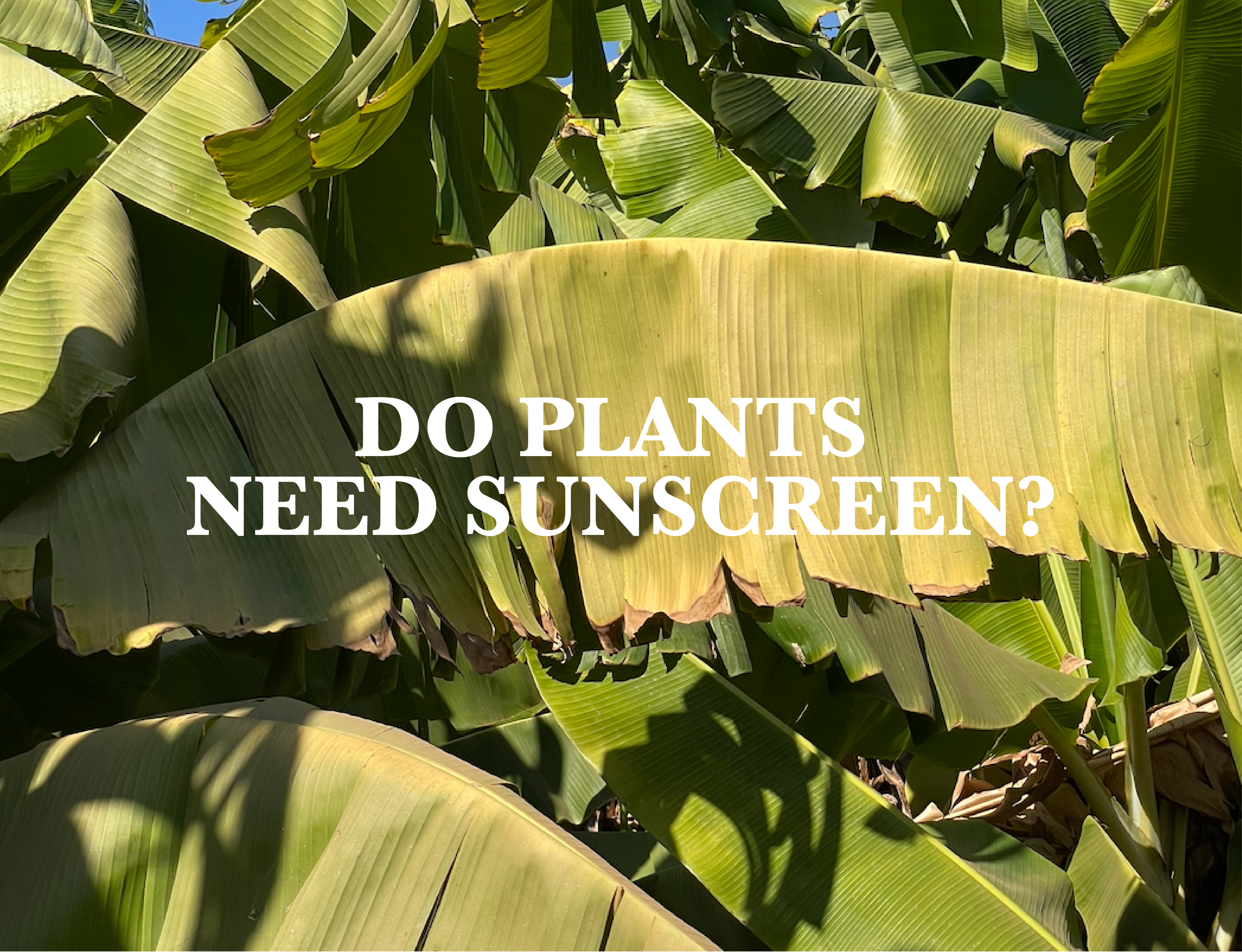Why would a plant need to be covered from sunlight, when it’s very physiology is designed around harvesting it??
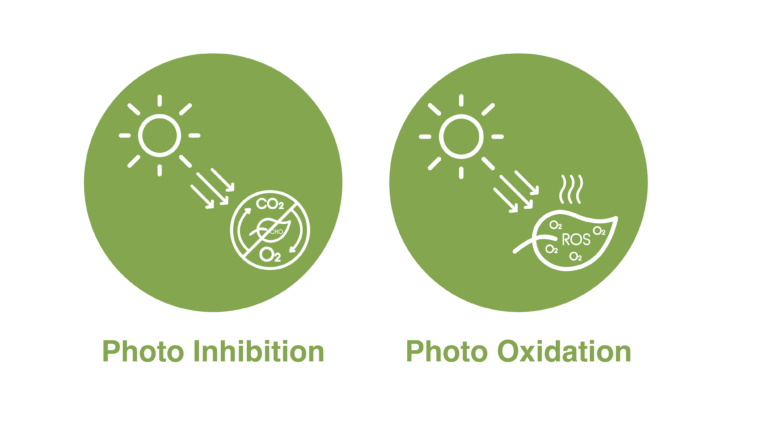
As a regenerative agriculture farmer, it’s important to be aware of the potential damage caused by sunlight to your plants when they are stressed. This damage, known as photo inhibition and photooxidation, can significantly impact plant health and productivity. The light intensity alone does NOT cause damage, but when coupled with other stressors like drought, low temperatures, and nutrient deficiencies, plants can experience photooxidation or photo inhibition.
In this article, we’ll explore what causes this and some simple ways to mitigate these issues and keep your crops thriving.
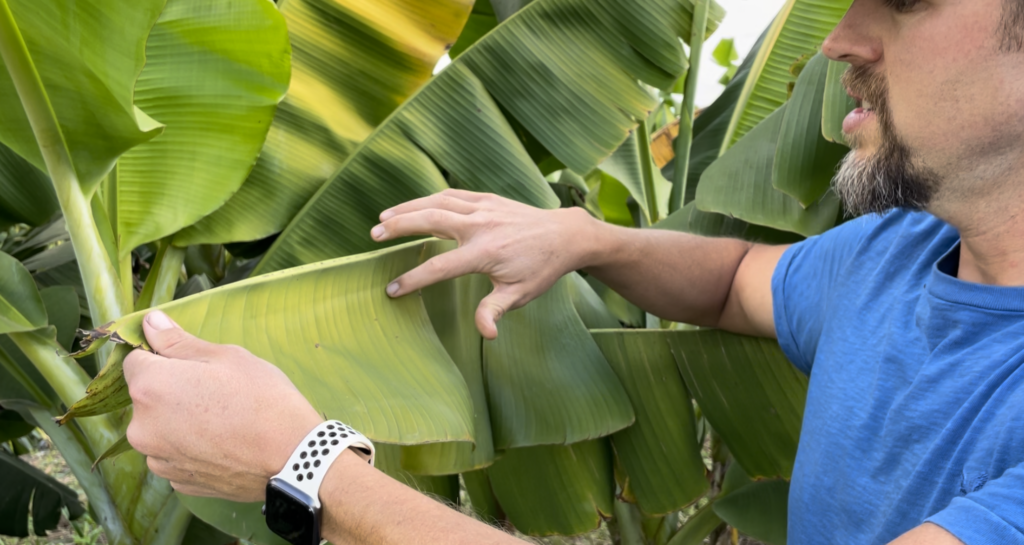
One of plants primary role is to absorb light from the sun and transfer that photonic energy into sugars. Why would a plant need to be covered from sunlight, when Its very physiology is designed around harvesting it?? This is the reason we think there is a deeper problem at the core. If an organism is struggling with the very process it is designed to carry out we must as the question every parent tires of hearing from their 4yr old kids… BUT WHY??
In Zambia plant “sunburn” is relatively common this time of year, our winter. One of the common ways to deal with this is to apply a kaolinite clay powder as a literal “sunblock”, much like applying sunscreen to human skin. While this often causes the burn symptom to releive, we do not think the underlying problem has been solved. The very act of blocking the sun will effectively reduce the plants ability to create pyruvate and by extension energy.
With less energy, the plant has less resource to produce the secondary metabolites etc it needs to operate effectively and mitigate the stressors it experiences everyday. Kaolinite clay has as much aluminum as silicon (Al2 Si2 O54) and when applied this can increase aluminum levels in the plant directly contributing to root disease.
Why would a plant be damaged by the very light it is designed to absorb? We think there is a root cause, and when resolved this will lead to healthier and more productive plants and crops!
Let’s Take A Deeper Look!
UNDERSTANDING SUN DAMAGE:
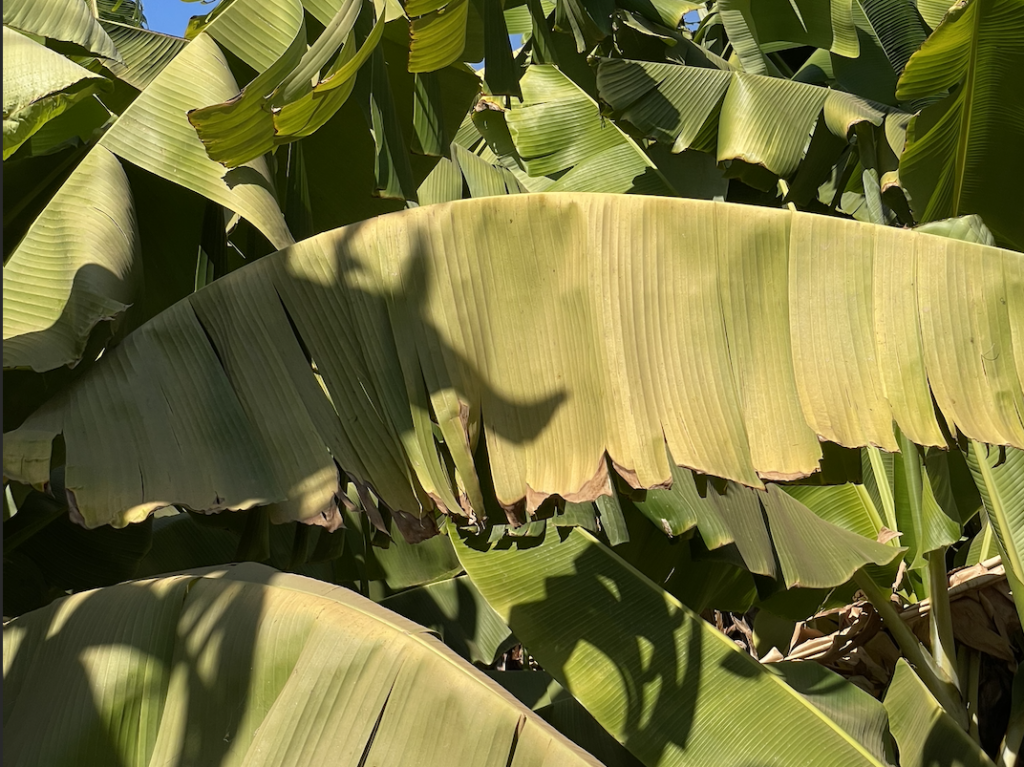
When plants absorb too much sunlight, they can experience Reactive Oxygen Species (ROS), which visibly manifests as sunburn or necrosis. To protect themselves, plants have natural defense mechanisms. They might change the angle of their leaves, roll them up, or move their chloroplasts to reduce light absorption. They can also dissipate excess light energy
as heat or activate detoxification mechanisms to counteract ROS damage. Repairing damaged photosystems is another
way plants recover from sun damage.
Plants have ways to shield themselves from excessive light. One method is by transforming photosystem II (PSII) into a photoprotected state. In this state, excess light energy is dissipatedas heat through a process called the xanthophyll cycle. However, some plant species take longer to transition from this protective state to high productivity, resulting in carbon loss and reduced crop yield as heat or activate detoxification mechanisms to counteract ROS damage. Repairing damaged photosystems is another way plants recover from sun damage.
OTHER FACTORS AFFECTING SUN DAMAGE:

Aside from excessive sunlight, other environmental factors can contribute to sun damage. High levels of ultraviolet-B (UV-B) radiation, low carbon dioxide supply, impaired carbon fixation, salinity, drought, and nutrient deficiencies can inhibit photosynthesis and lead to visible leaf symptoms like yellowing and necrosis.
OTHER FACTORS AFFECTING SUN DAMAGE:
Plants have their own defense systems to manage the effects of sun damage and ROS. They use enzymes like copper-zinc superoxide dismutase (SOD) to neutralize ROS and convert them into hydrogen peroxide, which is then reduced to water. Selenium can also activate superoxide dismutase (SOD), catalase (CAT), and peroxidase (POD). These enzymes act as defense mechanisms against ROS by neutralizing them or converting them into less harmful forms.
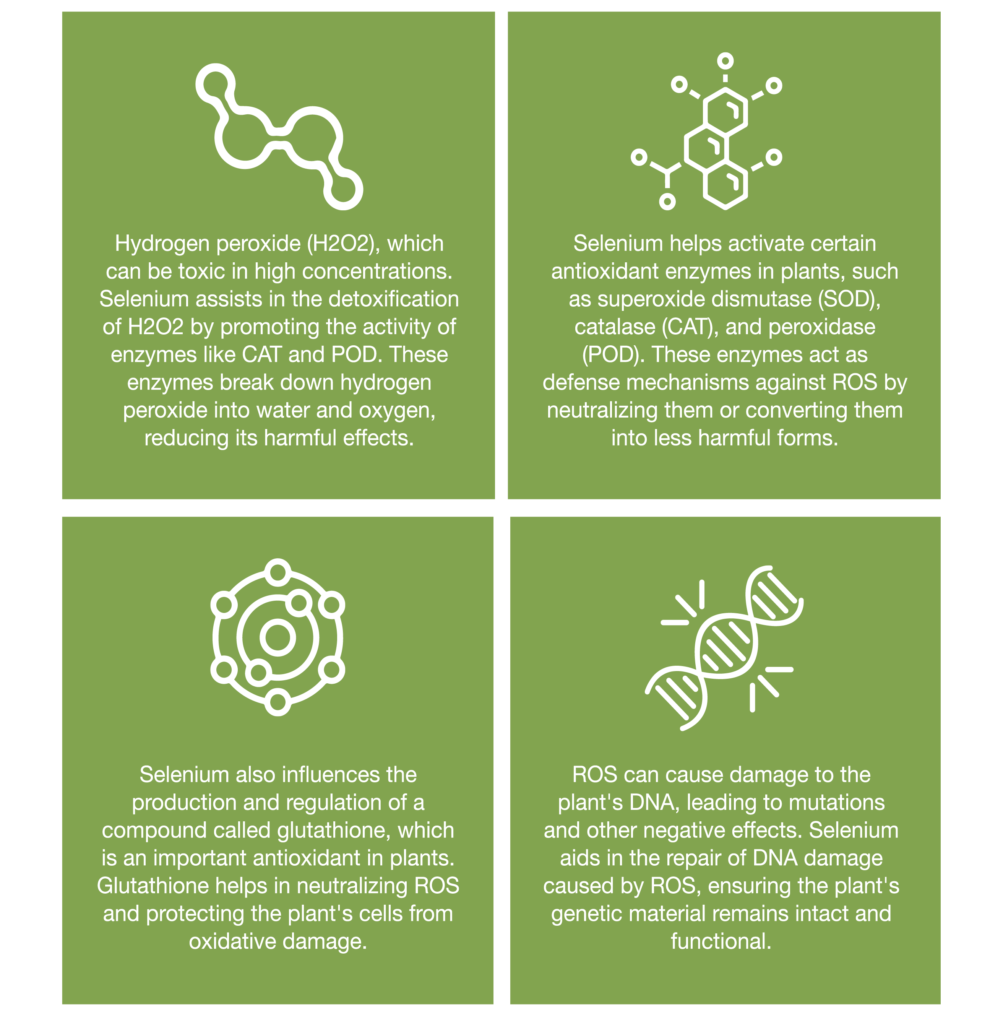
*It is important to note that Iodine has been shown to influence the uptake and translocation of selenium in plants. Adequate iodine levels can enhance the accumulation and utilization of selenium, which, in turn, supports the activity of selenoproteins like GPx. By facilitating the proper functioning of selenoproteins, iodine indirectly contributes to the maintenance of glutathione levels and antioxidant defenses in plants.
UNLEASHING THE POWER OF CARATENOIDS:
Carotenoids, which are pigments found in plants, play a vital role in protecting against sun damage. These pigments act as antioxidants, helping to neutralize excess ROS and prevent damage to the photosynthetic process. Ensuring adequate levels of carotenoids in your plants can boost their resilience to oxidative stress.
One such carotenoid group is known as xanthophylls. Xanthophylls are carotenoids, which are organic pigments composed of carbon and hydrogen atoms arranged in a conjugated double bond system. Oxygen atoms are also present in xanthophylls, typically in the form of hydroxyl (-OH) or keto (=O) groups, giving them their distinctive chemical properties.
The carbon, hydrogen, and oxygen atoms in xanthophylls are arranged in specific molecular structures that determine their absorption spectra and functions in plants. These structures allow xanthophylls to absorb light energy in the blue and green regions of the electromagnetic spectrum and transfer it to chlorophyll molecules during photosynthesis.
ELEMENTS INVOLVED AND CONTRIBUTING TO THE PRODUCTION OF XANOTHOPHYLLS INCLUDE:

**It is extremely important to note that an excess in any one of these elements can cause a deficiency in ALL others. This imbalance can create a cascade of deletirious effects on plant growth and crop production.
SILICON:
Silicon, as a mediator, can play a role in reducing reactive oxygen species (ROS) levels caused by photooxidation and photoinhibition in plants. When plants are exposed to excessive light or other environmental stresses, the energy absorbed by chlorophyll molecules can exceed their capacity for photosynthetic electron transport. This can lead to the generation of ROS, such as singlet oxygen, superoxide radicals, and hydrogen peroxide, which can cause damage to cellular components.
Silicon has been shown to mitigate the harmful effects of photooxidation and photoinhibition by regulating ROS levels in plants. It acts as a protective element by enhancing the antioxidant defense system and reducing ROS production.
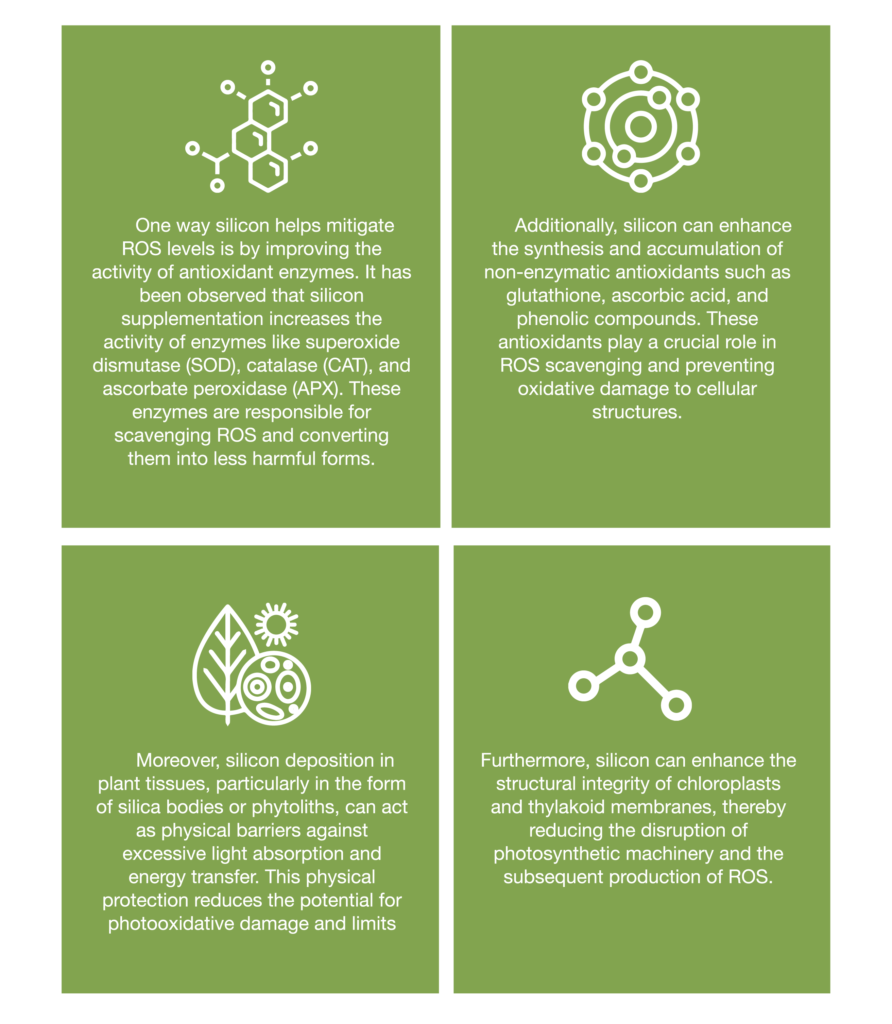
By modulating these mechanisms, silicon acts as a mediator to reduce ROS levels caused by photooxidation and photoinhibition. It helps maintain redox balance, protects against oxidative damage, and promotes the efficient functioning of photosynthetic processes in plants.
The most prefered form of Silicon to apply is Salicic Acid. Other forms have shown benefit as well such as Potassium silicate, but pH often makes it challenging to mix with other nutrients. Silica is best absorbed into the plant through foliar applicaitons (re plant sap levels via plant cytosol extraction test).
MITIGATING SUN DAMAGE:
As a regenerative agriculture farmer, there are practical strategies you can adopt to minimize sun damage and its effects on your plants. Consider using foliar applications of selenium and iodine, as these can increase the production of glutathione, which aids in mitigating the toxic effects of certain metals. Silicon and magnesium as well as other trace elements such as Zn, Cu, Mn, Fe can be very beneficial to creating a resilient and thriving plant. Additionally, utilizing biostimulants like amino acids, kelp extracts, carbohydrates, activated carbon, and plant-based flavonoids can help reduce stress levels in plants, allowing them to better cope with sun damage.
It is of utmost import to test all that can be tested. We should be practicing in field monitoring through plant brix and EC, soil moisture sensing as well as NDVI imaging, soil chemistry, and plant cytosol extraction (sap) from trusted labs.
As you can see here, an excess of Manganese, for example, can cause a deficiency in Copper, Zinc, Iron, and Magnesium. We are used to filling the lowest plank in the nutrient barrel, but when excesses are concerned we have found it to just be a good way to throw money in a hole! We get much better results with less money spent when we identify excessive nutrients or nutrient ration imbalances and correct those first. Then the others tend to come up on their own respectively.
As a reminder, there are no “Silver bullets”, but only quality tools applied approprietly through great managment! I hope this deep dive into the seemingly simple topic of “sun burn” causes you to marvel at the elaborate and robust design of the plants we have the privelege to work with, and perhaps it will encourage us to think deeply and look for the root causes rather than just simply applying some “sunscreen” to our plants that literally live on the process of absorbing sunlight!!
MITIGATING SUN DAMAGE:

As you work towards a sustainable regenerative agriculture system, it’s crucial to understand and address the issue of sun damage. By implementing simple techniques such as protecting plants from excessive sunlight and employing strategies like foliar applications and biostimulants, you can ensure the health and productivity of your crops. Remember, a little extra care goes a long way in safeguarding your plants against sun damage and promoting a thriving agricultural ecosystem.

Explore additional articles on regenerative agriculture to expand your knowledge and understanding of its principles and practices.

